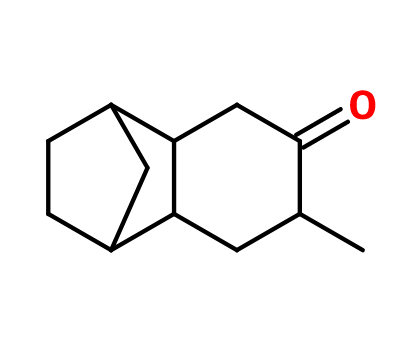
Photo credits: ScenTree SAS
Do you sell any of the raw materials? Would you like to let our users know?
Send an email to fournisseurs@scentree.coto learn about our advertising opportunities.
Do you sell any of the raw materials? Would you like to let our users know?
Send an email to fournisseurs@scentree.coto learn about our advertising opportunities.
General Presentation
-
CAS N° : 41724-19-0
-
EINECS number : 255-517-6
-
FEMA number : --
-
Density : 1,030 - 1,036
-
Optical rotation : Donnée indisponible
-
Allergens : This ingredient does not contain any allergen.
-
Refractive Index @20°C : Donnée indisponible
-
Volatility : Heart
-
Price Range : Data not available.
-
Appearance : Colorless to pale yellow liquid
-
FLAVIS number : Donnée indisponible.
-
JECFA number : Donnée indisponible.
Information on synthetic ingredients
-
Acid Value : Donnée indisponible
-
Boiling Point :
-
Detection Threshold : Donnée indisponible.
-
Molecular formula : C12H18O
-
Log P : 2,45
-
Molecular Weight : 178,27 g/mol
-
Fusion Point : Donnée indisponible.
-
Flash Point : >100°C (>212°F)
-
Vapor pressure : Donnée indisponible
Uses
Other comments :
Stability :
Quite stable in every commun application
Uses in perfumery :
Plicatone has a remarkable aromatic wormwood note, thujone-like facets. It is very interesting for creating fougores or aromatic accords. It is also useful for enhancing citrus or coniferous notes (pine, fir, cedar). It has a juicy pear undertone.
Year of discovery :
Data not available.
Isomerism :
Data not available.
Synthesis precursor :
Data not available.
Natural availability :
Plicatone is not available in natural state
Synthesis route :
Data not available.
Regulations & IFRA
This ingredient is not restricted

